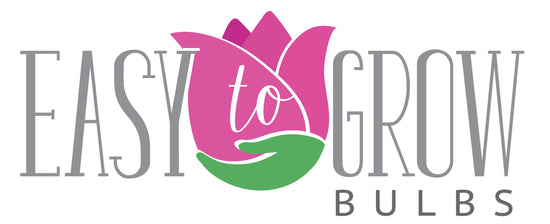Hypoallergenic Flowers

You’ve heard of hypoallergenic dogs (hello, all the Doodles), but what about flowers? When you’re a gardener like you are, kind of the last thing you want to have is flowers in your garden that make you sneeze and your eyes water. So, is there such a thing? Why, yes, there is.
If you belong to the Seasonal Allergy club with over 25 million other Americans, you’ll probably already know that what you’re allergic to when it comes to plants is their pollen. And lucky for you, there is a long list of plants that have little to no pollen and you can plant them to your heart’s content. We’ll also, however, drop a little list below of some of the worst plants for allergy sufferers—they’re beautiful and we love them, but we love you more.
Best Hypoallergenic Flowers
Hypoallergenic flowers have either no pollen or low pollen and are safe to use if hayfever gets you down—you’ll want to do some additional research if you’re particularly sensitive, though. On our “Best Hypoallergenic Flowers” list we also have a few that we are labeling as “yes, but”—meaning most of that type of flower are sneeze-inducing with a notable exception or two. But don’t worry, we’ll walk you through all that.
Note: This is not an exhaustive list. It is a list to give you hope that hayfever doesn’t have to ruin your gardening life.
- Begonia: Put tuberous begonias on your shopping list (or in your online cart)—these vibrantly colored tropical beauties aren’t likely to make your eyes weep.
- Clematis: This romantic climber is safe to use with the exception of Virgin’s Bower (Clematis virginiana) and Sweet Autumn Virgin’s Bower (Clematis terniflora) clematis.
- Crocus: Very low in pollen, early-blooming crocus probably won’t cause you any issues.
- Tulip: Plant those tulip bulbs with abandon, friends! And with ease. And no “bless you’s.”
- Petunia: A cottage favorite, this tender perennial is a safe bet for your container plants.
- Pansy: What would our gardens be without this cheerful girl? Thank goodness we don’t need to find out, right?
- Iris: This cut-flower favorite is also suitable for allergy sufferers—good to know, since they’re often brought inside for arrangements.
- Rose: Many gardeners don’t consider a garden truly a garden without rose bushes, and because rose pollen particles are too large to become airborne, you rosarians don’t have to make that Sophie’s Choice.
- Hosta: Yes, we know that we grow hostas almost exclusively for their foliage, but they do have flowers and those flowers are pollen-free.
- Daffodil: Although daffodils actually do produce pollen, these blooms are generally pollinated by insects rather than wind, so—good news, they’re considered hypoallergenic! Whew, we were going to have a meltdown if we couldn’t plant those. But, to be on the safe side if your allergies are particularly bad, feel free to plant daffodils but have someone else tend to them.
- Impatiens: Some are annuals and some are perennials, but all of these colorful little favorites are good to go for the Sneezers!
- Lily: Asiatic lilies are pollen-free, so they’re a good choice—but their strong fragrance can sometimes be too much for some people to handle, just FYI.
- Sunflower: Most sunflowers are on the verboten list with the exception of some with pollen that is too “heavy” to spread easily—Apricot Twist and The Joker are two to try, but you’ll want to do a quick internet search if you’d like other sneeze-proof sunflower options.
- Dahlia: Okay, we didn’t want to break your heart with this one, since dahlias are so beloved. They’re in the aster family, which is not widely considered hypoallergenic (that’s kind of an understatement). The happy exceptions to this are the formal double dahlias that have virtually no pollen—try ____, _____, and _____. (Rachel: I’m waiting for info from Nick/Jim on if ETGB has “formal double” dahlias and then I will plug in. If I don’t hear back or we don’t have any, we can just remove this bullet point from the list)
Aaaand, the Worst
We’re so sorry, literally everything in the aster family, but you’re on our list and it’s not the good one. There’s a place for you in other gardens, but not these. But don’t worry, you’re in good company with these Gesundheit-producing blooms:
- Chamomile
- Chrysanthemum
- Daisy family (including asters)
- Sunflowers (the ordinary type, not the ones listed in the previous section)
- Amaranth
- Baby’s Breath
- Dahlias (except the ones listed in the previous section)
- Zinnias
- Goldenrod
- Marigolds
- Yarrow
- Coneflowers
- Any plant that is related to ragweed (goldenrod and sage, for example)
Tips for Allergy Sufferers
If you do tend to get seasonal allergies and still want to plant all the flowers, we can hardly blame you—we just want you to be safe and comfy. So here’s our tips for you rebels:
- Plant pollen-heavy flowers and have someone else maintain them.
- Don’t cut sneeze-worthy flowers and bring them inside.
- Know which plants and flowers cause you the most distress and avoid them.
- Have your pollinator flower area farther out from the house rather than right at your back door.
- Do your research before buying and planting any flower you are unsure of.
- Don’t mess around if your allergies are severe and could cause you serious health issues—stick to the truly hypoallergenic flowers and leave the rest alone!
- Tags: allergies flowers hypoallergenic
- Katie Elzer-Peters
